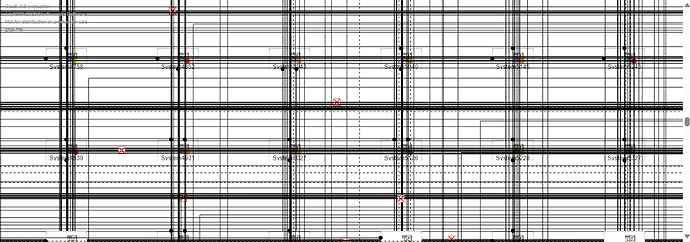If you can use Node.js on the server, here’s a test script used to make sure that running a layout on a headless server (i.e. no Puppeteer) produces the right values for the node locations. Presumably you would save that location information in your database and send it to the browser. That way your Diagram’s Layout could have Layout.isInitial set to false, since it wouldn’t be required to run when receiving a new model and it already has all of the node locations.
This example depends on a TwoWay Binding on the Node.location property so that the laid-out locations are stored in the model. But you needn’t implement it that way – you could just iterate over the Nodes and save each one’s location or position or actualBounds or whatever is needed.
// nodescript.js
// This example loads the GoJS library, creates a Diagram with a layout and
// compares the updated model with the known correct result.
// Load GoJS. This assumes using require and CommonJS:
const go = require("gojs");
const $ = go.GraphObject.make; // for conciseness in defining templates
const myDiagram =
$(go.Diagram, '', // No DOM, so there can be no DIV!
{
viewSize: new go.Size(400,400), // Set this property in DOM-less environments
layout: $(go.LayeredDigraphLayout)
});
myDiagram.nodeTemplate =
$(go.Node, 'Auto',
// specify the size of the node rather than measuring the size of the text
{ width: 80, height: 40 },
// automatically save the Node.location to the node's data object
new go.Binding('location', 'loc', go.Point.parse).makeTwoWay(go.Point.stringify),
$(go.Shape, 'RoundedRectangle', { strokeWidth: 0},
new go.Binding('fill', 'color')),
$(go.TextBlock,
new go.Binding('text', 'key'))
);
// After the layout, output results:
myDiagram.addDiagramListener('InitialLayoutCompleted', function() {
const json = myDiagram.model.toJson();
const expected = `{ "class": "GraphLinksModel",
"nodeDataArray": [
{"key":"Alpha","color":"lightblue","loc":"0 25"},
{"key":"Beta","color":"orange","loc":"125 0"},
{"key":"Gamma","color":"lightgreen","loc":"125 75"},
{"key":"Delta","color":"pink","loc":"250 75"}
],
"linkDataArray": [
{"from":"Alpha","to":"Beta"},
{"from":"Alpha","to":"Gamma"},
{"from":"Gamma","to":"Delta"},
{"from":"Delta","to":"Alpha"}
]}`;
console.log(json === expected ? "test is OK" : "test got unexpected model: " + json);
});
// load a model:
myDiagram.model = new go.GraphLinksModel(
[
{ key: 'Alpha', color: 'lightblue' },
{ key: 'Beta', color: 'orange' },
{ key: 'Gamma', color: 'lightgreen' },
{ key: 'Delta', color: 'pink' }
],
[
{ from: 'Alpha', to: 'Beta' },
{ from: 'Alpha', to: 'Gamma' },
{ from: 'Gamma', to: 'Delta' },
{ from: 'Delta', to: 'Alpha' }
]);

